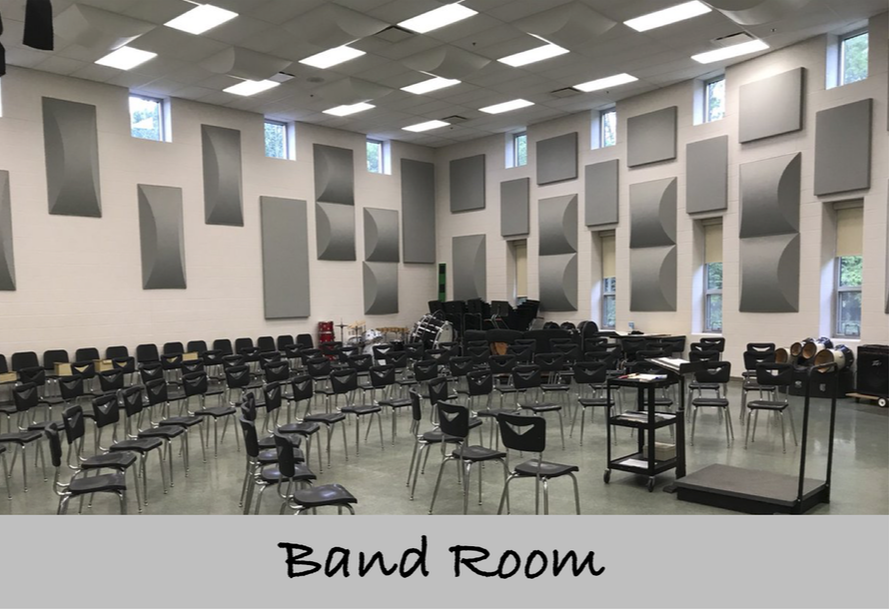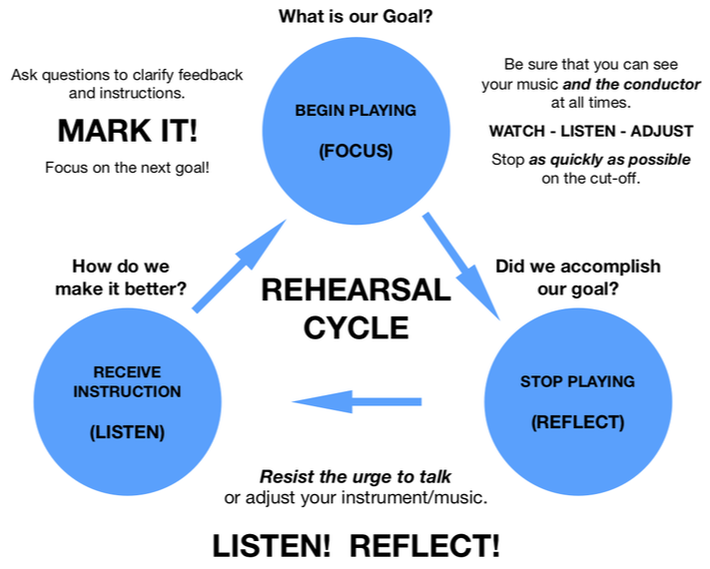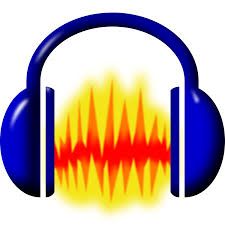Consider this page your DAILY REHEARSAL. We will start with our Daily Drill (Warm-up - Ensemble Development), followed by Repertoire, Sight-Reading, and other musical extensions to challenge you and help us grow as an ensemble. This is also a great format to follow as a daily practicing regime. If you want more information about how to practice, check out the PRACTICE FOR SUCCESS! page.
REHEARSAL ETIQUETTE...
The success of the ensemble depends on the work and dedication of each and every member. We have established the following expectations in order to maintain discipline and achieve a quality that will reflect positively on every member of the ensemble, the music program as a whole, and the Mt. Hebron community.
The success of the ensemble depends on the work and dedication of each and every member. We have established the following expectations in order to maintain discipline and achieve a quality that will reflect positively on every member of the ensemble, the music program as a whole, and the Mt. Hebron community.
|
What you can expect of the director:
|
|
What I expect of you:
|
|
THE REHEARSAL CYCLE
How to have a Successful & Productive rehearsal
How to have a Successful & Productive rehearsal
DAILY DRILL...
WARM-UP - The purpose of the warm-up is to physically and mentally prepare yourself to perform.
WARM-UP - The purpose of the warm-up is to physically and mentally prepare yourself to perform.
|
Physical Preparation
In a sporting event an athlete cannot expect to do their best without a proper warm-up and training. They risk physical injury, reduced endurance, and mental defeat. Playing a musical instrument is only different in that we use different muscle groups. These muscle groups need to be conditioned and strengthened in order to grow as a musician. |
Mental Preparation
When you practice/rehearse, you should relax and focus your thoughts on what you are doing. Block out any distractions that interfere with your playing. |
"Avoid playing too high, too loud, too long, too soon."
STEP #1: Silence
A proper warm-up begins with focus. Silence your body and your mind so you can accomplish your goals.
A proper warm-up begins with focus. Silence your body and your mind so you can accomplish your goals.
|
STEP #2: Proper Posture
The manner in which we approach sitting or standing to play a musical instrument is the foundation for mastery. Proper posture ensures that 1) the body is aligned, 2) we maximize space for breathing, and 3) we eliminate tension. Have you stretched?
|
Posture Reminders...
|
|
STEP #3: Breathing
The key to playing any wind instrument well is having great breath control. We will focus on the two fundamental aspects of breathing: inhalation and exhalation. The whole breathing process is similar to a sigh or yawn… a large, full, relaxed, steady inhale (expansion) followed by an immediate full, relaxed, and steady exhale (release). |
Breathing Reminders...
|
|
You will need to access your Tonal Energy Tuner App for the next section.
Click the TONAL ENERGY GUIDE for a reference manual.
|
|
Using the SOUND (DRONE) feature...
|
Using the TUNER feature...
|
Using the METRONOME feature...
|
|
WINDS
|
PERCUSSION
|
|
STEP #4: Sing, Buzz, Play
This is when we begin to connect the sounds we hear to the sounds that we create.
|
STEP #4: Stretch
This can be combined with STEP #3. |
|
STEP #5: Long Tones, Remington, Flow Studies
This is when we apply our fundamental skills towards producing the best possible sound on our instrument.
|
STEP #5: Legato Strokes
This is when we start to move our hands.
|
|
LONG NOTE COMPETITION
See how long you can sustain your tuning pitch (with good tone/intonation). Use a stopwatch to record your time and try everyday to match/beat your last time. |
LONG ROLL COMPETITION
See how long you can sustain a single stroke roll (with evenness/consistency of sound). Use a stopwatch to record your time and try everyday to match/beat your last time. |
|
STEP #6: Instrument Specific Concepts
This is when instrument specific skills and techniques are used to complete an individual warm-up routine.
|
STEP #6: Instrument Specific Concepts
This is when instrument specific skills and techniques are used to complete an individual warm-up routine.
|
ENSEMBLE DEVELOPMENT - These are the concepts, techniques, and exercises that help students grow individually and as an ensemble.
|
STEP #7: Note Length, Articulation, Rhythmic Studies
This is when we begin to open our ears beyond our own sound and begin to focus on the sound of the ensemble. Exercises include:
|
Sight-Reading Factory is an online resource that allows you to create both rhythmic and melodic sight-reading examples. These examples are great for rehearsing Note Lengths, Articulation, and Rhythms.
|
|
STEP #8: Scales - Scale Patterns
This is when we continue to develop our technique. Exercises include:
|
CAN YOU...
|
|
Music Theory
|
Recording
|
Notation
|
STEP #9: Tuning
We have been listening and adjusting throughout this warm-up process, but now it is time to fine tune.
We have been listening and adjusting throughout this warm-up process, but now it is time to fine tune.
- Set the TE Tuner App to a drone of your tuning pitch (Concert F, Bb or A)
- Hum the pitch
- Sing the pitch on "Oh"
- Match the pitch on your instrument
|
MR. SMILEY COMPETITION (Use the Tuner setting on the TE Tuner App...)
|
STEP #10: Chorale
We have been listening and adjusting throughout this warm-up process, but now it is time to fine tune.
We have been listening and adjusting throughout this warm-up process, but now it is time to fine tune.
- Set the TE Tuner App to a drone of the concert key. (Select your instrument sound)
- Play through any chorale setting.













